Airbrush Art by Nani Serrano
Spanish artist Nani Serrano uses airbrush to create captivating artworks
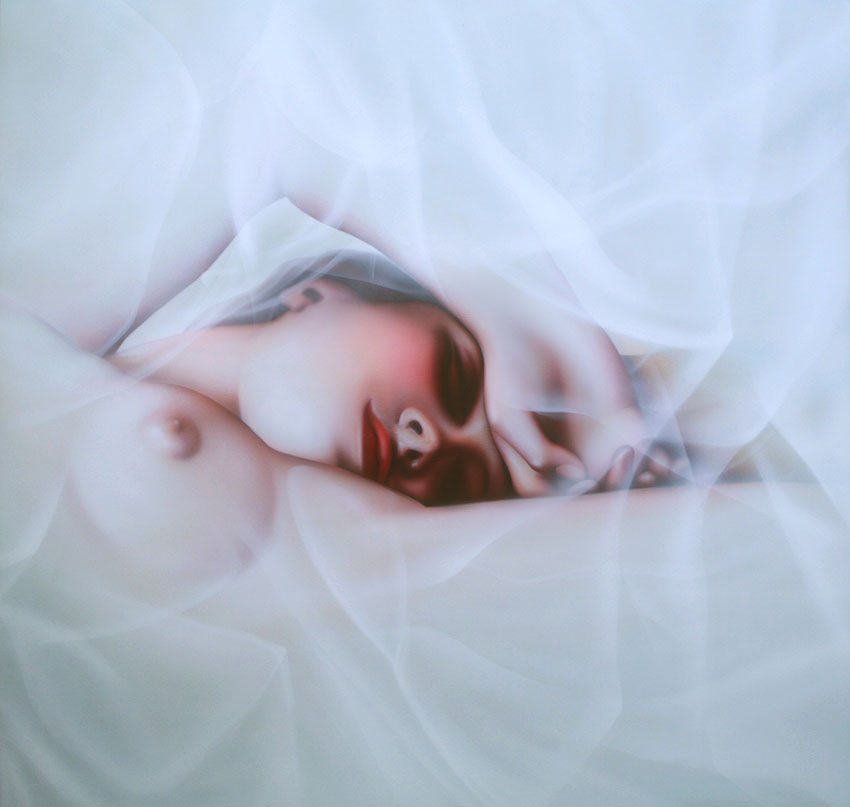
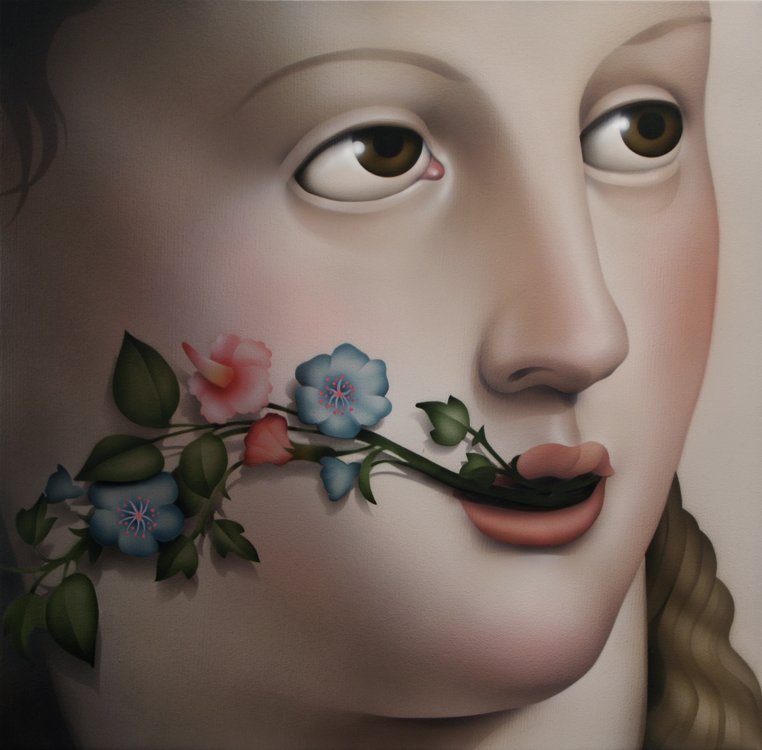
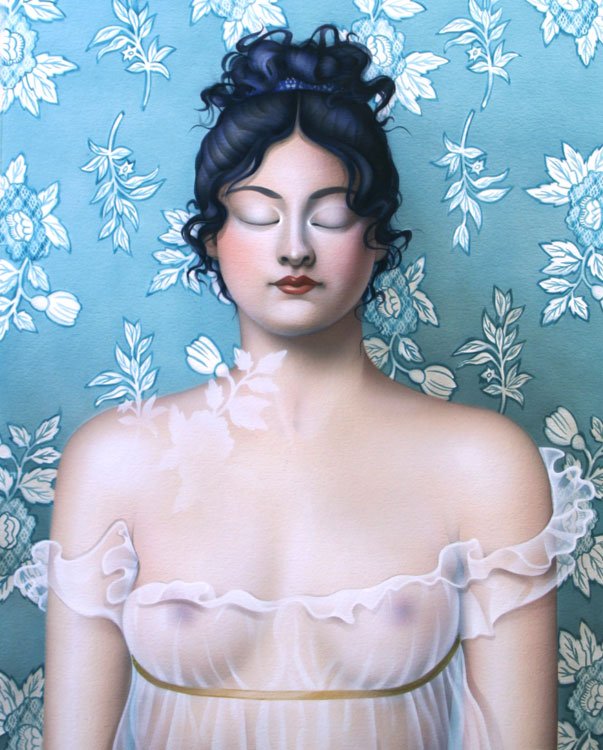
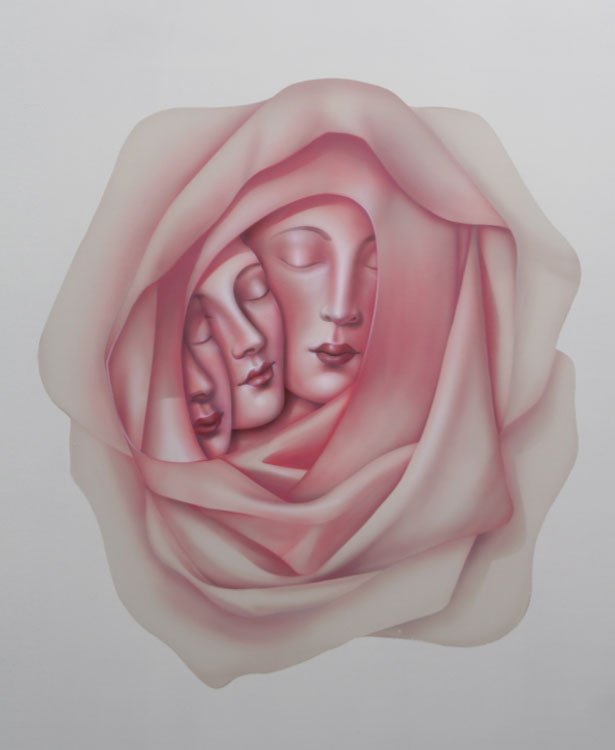
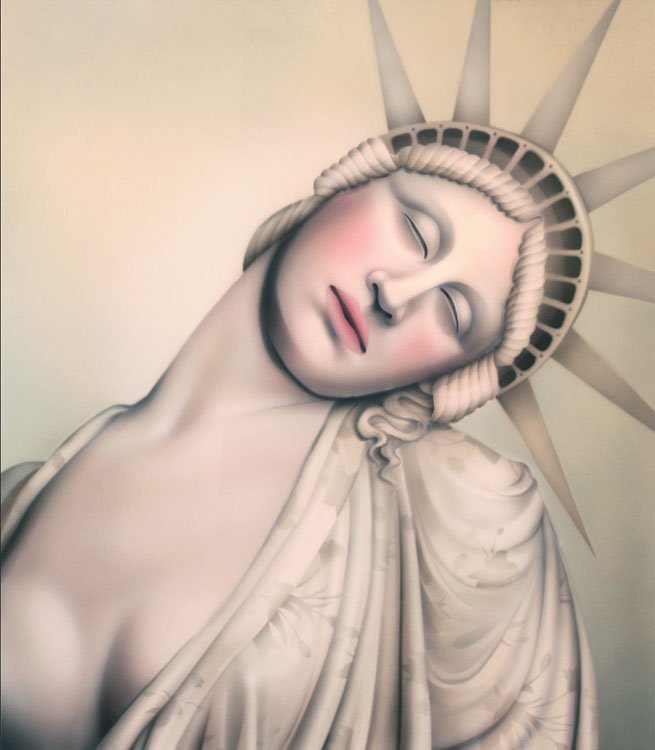

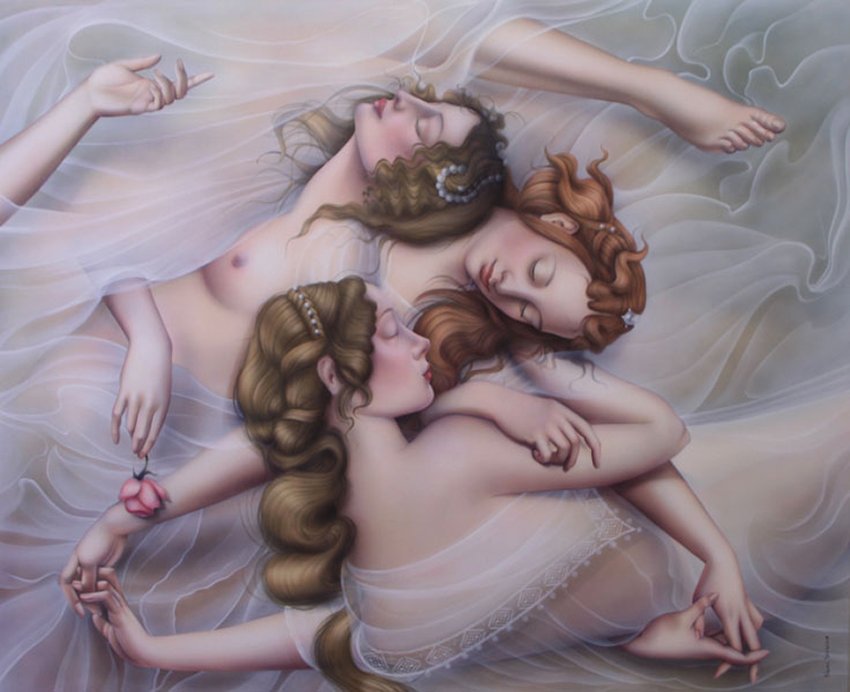
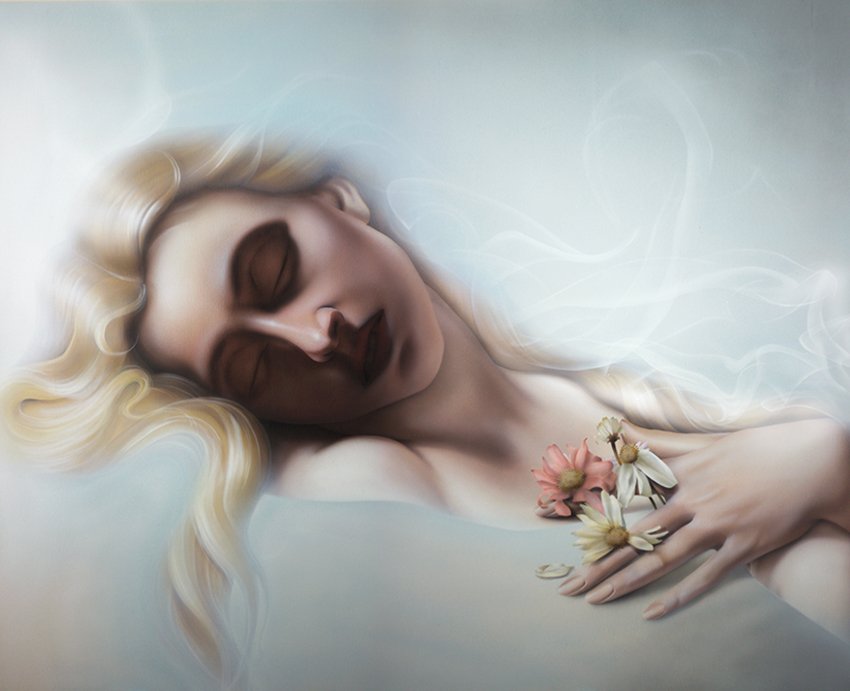

Emma Steinkraus is an artist, editor of Company Editions, and Assistant Professor of Fine Art at Hampden-Sydney College. Her paintings and installations use strategies of juxtaposition and layering to explore ecology, gender, and the history of science. Her current project, Impossible Garden, spotlights the contributions of pre-20th century women to scientific art through an immersive wallpaper collaged from reproductions of their work.
Daniel lives and works in Leiden, The Netherlands. His work has been exhibited nationally and internationally. In his current work he searches for the transmutational properties of matter. The portraits and sculptures do not have a definite form and posses different realities on how they can be perceived. In order to come to new forms Daniel cuts up paintings, finds things on the street and uses creations made by others. The loose elements from these endeavours are used as disjointed brushstrokes that are reassembled in coherent shapes again, creating an object which holds no truth in shape.

The idea of the artists is to show the connection between a stable classical image in art and instant modern variability. It is she who is difficult to perceive by the viewer. She, most often, attracts with her duality, which the very union of two contemporary artists possesses.
Galina Shevchenko is an artist from Finland. For a long time, she worked in the classical style of painting. Her delicate watercolours, full of romantic mystery, promise both tranquillity and adventure: “The sun has not yet risen above the haze of clouds, and the mountains in the distance seem blurred in the predawn haze. The yachts are preparing to leave the bay for the open sea, but so far everything is motionless and breathes peace and quiet.” And now Galina herself embarked on the study of new facets of contemporary art.
Daria Khasaia lives and works in Istanbul. She chose the fragility of human emotions as the main direction of creativity: shame, anger, and pain along with unconditional love, tenderness and acceptance. She expresses her vision of the complex human nature with the help of collage, photo and video art, which can be accompanied by a live musical performance.
The creative union of such dissimilar artists was born in 2019 when they both received the Peggy prize. This union can be called a harmonious symbiosis of opposites, which breathed life into the "Connections" project. Connections between mature and young, unshakable and changeable, past and yet to come. As well as the connections between people, nations, and countries, which the girls demonstrate by personal example.
The artists presented five works in mixed media, where they combined classical and modern techniques. The message of most of the works is clear on an intuitive level. This is due to the desire of girls to make the contact of viewers with art more accessible.
The world is rushing at a crazy pace, changes sweep everything around, giving birth to new and new trends, names, and meanings ... It is impossible to remain a retrograde, nervously sitting on a stool of the past. And at the same time, it is so important to have unshakable foundations and roots that will help you not get lost in the whirlwind of a crazy future. Where is this edge? Transition? Merging two elements?
Each of the artists answers this question in her own way, but such dissimilar voices of the girls surprisingly merge into unison.

Galina brings out the haze of a blurred watercolour of hazy shades, deftly writing out the smallest details. Unites Daria's collages into a surreal world full of myths and deities, as if in an unusual dream. Unites the works of the artist’s mood, wary and curious in relation to the subtle moment of transition.
Most of the works have an unusual structure - this is an attempt to come up with the very future art that the project is looking for. Artists simply allowed themselves to be in a creative search, without depriving themselves of inner freedom. After all, the theme of the connection between the past and the future, life and death is presented to each of us in different ways.
“Artist Rogan Brown introduces his intricate cut-out paper ‘coral garden’, following his previous series that emphasised the mesmerising diversity of the coral realm. In his previous sculptures, the artist sought to capture the durable yet fragile silhouette of the corals, which is a symbol of the overwhelming impacts of global warming and man-made destruction.” via designboom
‘Coral Garden’ is part of an ongoing series displayed at Galerie Bettina in Paris, as a contemplative journey to the heart of nature. “The reefs are a potent symbol of the planet itself: teeming with life and colour and biodiversity and yet threatened with extinction because of our inability to control our own appetites and to accept the consequences of our own actions.”

We are happy to announce absolute talent Alexey Kondakov is joining NFT Art Scene on @Superrare.co. You may know Alex for his meticulously created collages featuring the clash of reality and a moment of art history. Every work is painstakingly created by artist by selecting scene from real life, adapting the lights and selecting a perfect situation from the history of arts
Tiffany Cole was born and raised in San Francisco California and is now based in London England. She is a self-taught artist and a muse to some of the world's leading artists. While her work revolves around the human form Tiffany also adds raw, colourful abstraction to her figure work. After the careful and technical creation of the figure she dives into pure emotion with instinctual, bold mark making.
“I am deeply interested and consumed with the beauty and sensuality of the figure. I feel like I get to tell stories with my hands and create the worlds that I felt I had to keep trapped in my mind for so many years. Through my art I am free to express my sensuality, and I’m finding with my work I’m able to give a voice to the inner thoughts of many women I’ve come to meet, who have become muses to me. My work represents the two dominant and sometimes harmful sides of my personality, obsession with perfection with bouts of exuberant spontaneity”

Victor Fota is a young visual artist basing in Bucharest, focusing mainly on oil painting, generating most of his ideas on the canvas with the help of digital tools for conceiving the designs.
Recently, he began the journey of Crypto Art, recreating some of his best analogue works into digital-enhanced versions of the original oil paintings. The digital augmentation of the paintings is executed using digital software to improve or animate the still image. The 1/1 NFTs can be found on SuperRare.com, Foundation.app and a collection of DESIGNOIDs on MakersPlace.com
In her most recent work, Objects of Desire, van Dijk investigated the increasingly intimate relationship between humans and technology that may eventually lead to blurring of boundaries between the two.
To illustrate the concept, the designer, invented a three-step method.
In step one, the first dataset was curated containing both realistic (representing human genitals) and abstract sex toys. These toys are objects we by nature have a very close physical relationship with and could also be seen as an example of (sexual) objectification.
In step two, a pre-trained machine learning (ML) model was used to generate a collection of 1,000 new, non-existing shapes based on the initial dataset.
In step three, the generated images were curated and translated back into a three- dimensional physical reality. This resulted in a series of undefined, anthropomorphic, human-like sculptures.
The Objects of Desire design project encourages us to critically evaluate the fundamental questions and ethical implications related to the rapidly evolving relationship between humans and technology. It ‘confronts the viewer with a speculative scenario and leaves them to decide whether they perceive the outcome as human, non-human or something that exists in between.’ (van Dijk, 2021)
Photo credits: Nahmlos

Abi Daker is a British illustrator who lives and works in Cyprus. She works extensively on large scale print projects as well as editorial and book commissions. In 2016 her drawing of the Houses of Parliament was used as the illustration on the British five pound note. Abi recently joined NFT movement with her works available on Blockchains of Ethereum and Tezos
Peyman Naderi is a young Persian contemporary fine art and portrait photographer. As he began his career as a professional photographer, his first motto was to create original and creative photos through which his own perceptions of the world and art could be understood. Also, he is eager to represent a unique way of looking at various concepts in the world.

UK based multi-disciplined published artist Ash White utilising code and math to create digital art. We adore his transformation from contemporary painter and collage artist to NFT digital creator recently


The Word Search Series by artist Graham Kelman investigates concepts of contradiction and loss of meaning through the use of a single sculpture made from many individual sculptures. Each viewer is invited to excavate the hidden poem(s).
The artwork is designed to evolve into new works, where each glyph module moves on a system of hidden rails. New poems are composed on a regular basis.
“n 2017, I had the idea to create a modular artwork composed of smaller sculptures that could be rearranged to create new pieces. Working with @jennyholzerstudio influenced me to do something a little more direct, thinking about the alphabet as a kit of parts. I’ve been interested in the intersection of Graphic Design and Architecture, and this project was a good opportunity to explore that.
Little did I know that it would take me almost four years to complete the series. This is the first work I completed this year.
Something else was happening during this time. It seemed like words in culture were increasingly losing their power to convey a common meaning. Two different people could read the same thing and draw wildly different conclusions, almost predictably, based on their pre-affiliated tribe.
Perhaps, I could create a series of word-search puzzles that could celebrate misinterpretation, contradiction, and loss of meaning, where everybody could draw their own conclusion and choose something they could be upset about, together. I wanted it to appear beautiful and almost decorative at first, and really force people to dig out the little depressing poems inside.
Unfortunately, I didn’t really think too deeply about what it would take to conceive, design, and produce 26 custom individual sculptures, fabricated hundreds of times to create a variety of language and meaning. Each letter was a meticulous mini-project.”
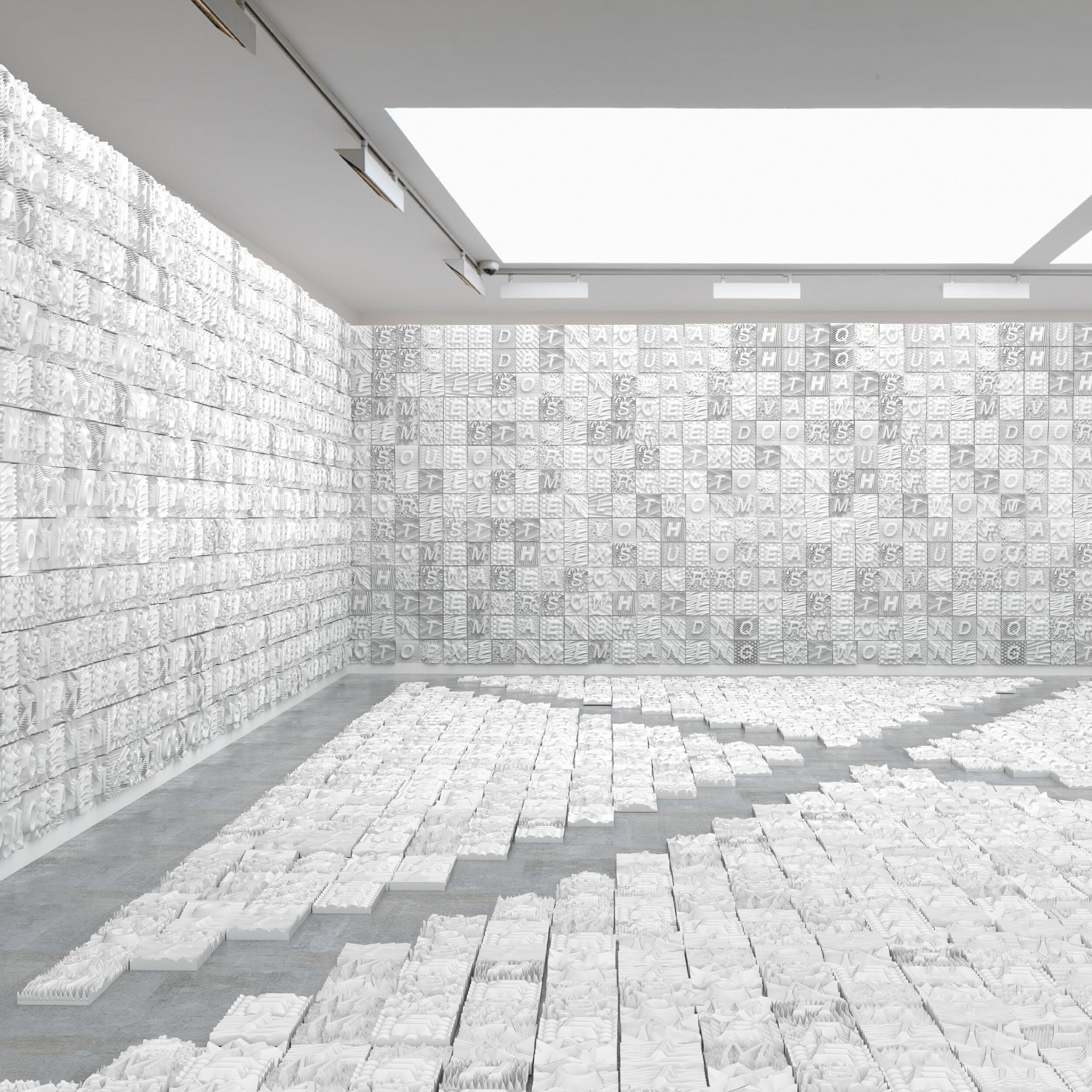

Italian artist based in Barcelona Antonella Montes works under Lantomo moniker. She studied architecture in Italy, in Rome and Genoa; then moves to Spain, specialising in scenography and exhibition design. Just a few years ago, since 2010, Lantomo started to dedicate herself exclusively to painting, and her passion has definitely become a job. And in this journey, her stay of almost two years in Beijing, China, have left an indelible trace. Her drawings have become more accurate and detailed, her only colours the black and white, with touches of red, and the drawn faces have come to have Asian features.

“The graphite portraits I create are almost realistic, suspended in a personal universe between realism and vision, but I’m not interested in virtuous details, I look for the representation of the emotions of my subjects.
Drawing has always been present in my life, like a way of expressing myself. My portraits embody a feeling of isolation and introspection, involved in silence. Memory, fears and loneliness in this society are the subjects that obsess me.
I try to bring to the surface all traces of emotions behind a gaze.”
Anthony Azekwoh is a Nigerian-based author and artist. He has gathered worldwide attention for his art and writing and has worked with Show Dem Camp, Masego, Adekunle Gold, BlaqBonez and many more international clients. He has written five books so far, and is now working on the sequel to his fourth book Ṣàngó, Oya.

What is “distant”, “unknown” and “amazing” for us, what could you describe in such words? Most often we think this way or talk about two things: about the future and about space.
Same things we can also say about the art objects created by the modern artist and sculptor Vasilisa Lipatova. On the one hand, it is because the artist works with these two themes - “space” and “future” and creates them in her objects. On the other hand, it is because the techniques that the artist develops to create her works cause delight among the audience and great interest among professionals. And, finally, the emotions that the works bring are emotions of joy, surprise and delight, just those that we experience when we come into contact with something “distant”, “unknown” and “amazing".
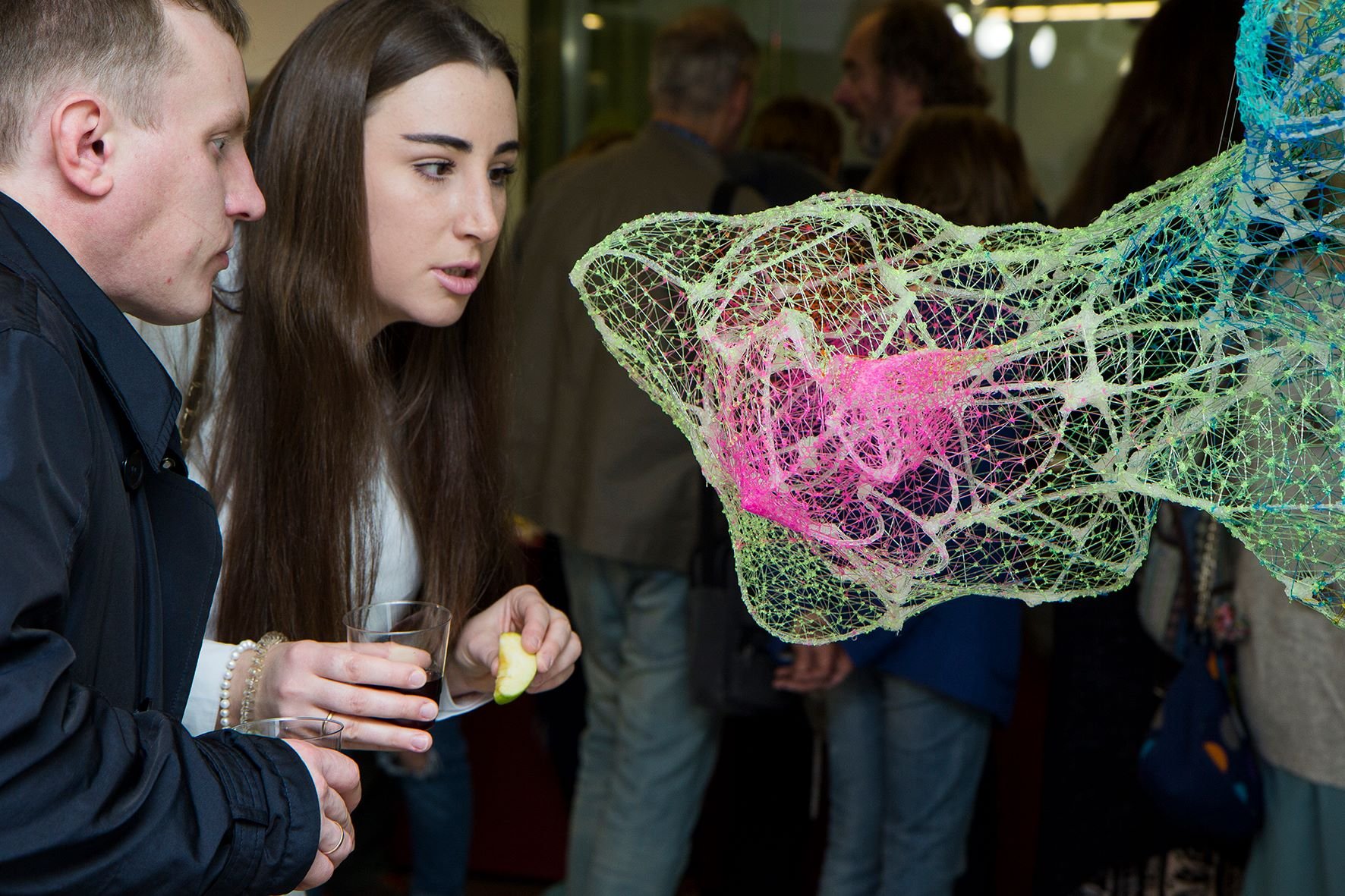
Let's sort it out in order.
So, “Space" - how can you create art objects in the form of space, in volume?
Sculpt round planets and hang them from the ceiling?
Or cut it out of some material and put it on a pedestal?
Perhaps this would be the most obvious option, but as we said above - the artist likes to invent and develop her own techniques for creating art objects. The main technique in which all the interior art objects of the artist are created is called “manual 3D printing". This is a meticulous and delicate work with molten plastic thread, which allows you to “weave” three-dimensional aerial art objects almost literally in the air. And also to create flat canvases with three-dimensional elements on their surface - literally to imprint space in space and material.

It was exactly these artworks that made the artist famous and exactly these works caused such delight and such surprise among the audience.
And it was thanks to the development of this technique that the artist began to create both exhibition objects that are included in museum collections (for example, one of the artist's works was included in the collection of the State Tretyakov Gallery) and small interior canvases that literally anyone can buy and hang at home, and thus not only touch art, but literally become involved in the international project of the artist “Space Atlas".

And also to make a profitable investment - every year the merits of the artist are literally growing before our eyes, and at the same time the works themselves are becoming more expensive.
Moreover, it is worth noting that the artist has entered the world art market and her international career only adds “advantages” to the main achievements.
It’s just enough to google “Vasilisa Lipatova” to see how many publications the artist has in different media.
Or you also can read her CV and see her participation and victory in international and All-Russian competitions, diplomas with first places from different years, as well as international exhibitions of such a level as the Biennale.
Separately, it is worth talking about royalties, the artist's works created specifically for a large circle of connoisseurs start from $ 100 - $ 300, this is done specifically so that a large number of people can easily afford to buy the artist's works. But at the same time, her royalties for the development of projects start from $ 5,000 and often $ 10,000, which significantly exceeds the average market prices, where the artist is often offered to develop a project for $ 1,000 - $ 500 dollars or even do it for free.
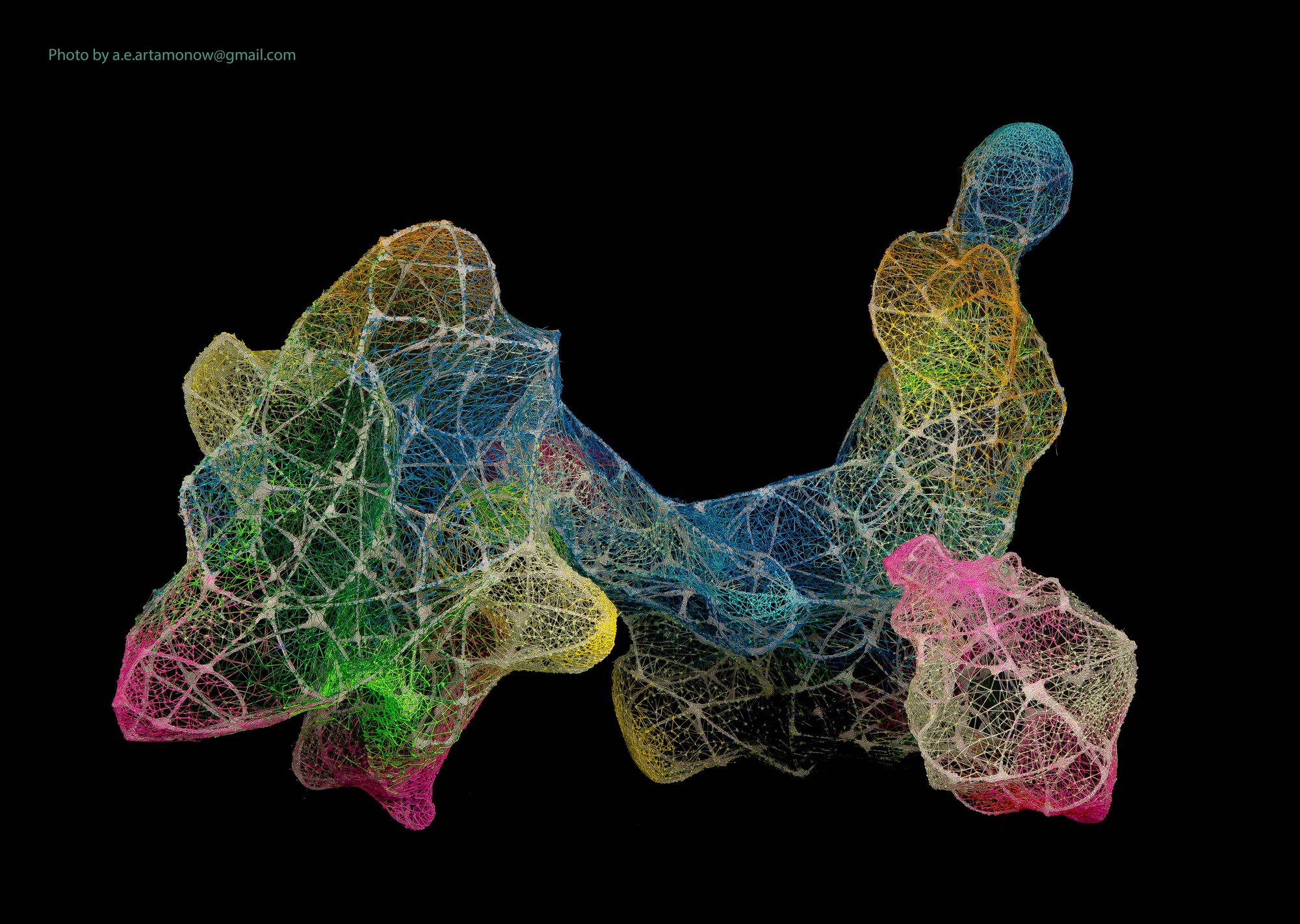
The project “Space Atlas” became for the artist another step in the arena of world fame and demand, in one year it grew from a small town project to an international one, several objects were included in museum collections, and one of the objects received the support of the Ministry of Culture of the Republic of Buryatia - the object “Legends of Baikal" became the first public art The object was located in the capital of Buryatia, the city of Ulan - Ude and immediately entered the collection of the most prestigious museum of the Republic - the TS Sampilov National Museum.
We will continue to observe the dizzying career of the artist, and we will continue to keep you informed about her new takeoffs and Space projects.

French self-taught artist David Bayo is based in Strasbourg and specialised in highly detailed drawings rendered in ink, mostly using the Stippling technique. It is a drawing technique in which areas of light and shadow are created using nothing but dots. Painstakingly and meticulously!
Columbus based fine artist Christopher Burk focuses on depicting the American urban landscape through the vehicle of paintings, and drawings.
Numerous visits to France since 1995 had a huge impact on Alexis Olin's art. Since then, painting, music, photography, and fashion have become connected in all the projects to which he relates. Despite the variety of activities, brushes with canvas and computer with digital pen remain a priority. The seven-year edition of the K9 comic book magazine and the fascination with the Franco-Belgian School of graphic novels form the basis for writing paintings and illustrations. Later, the work of the Renaissance, as well as contemporary artists from Europe and Asia, became the inspiration. Creating the Métrique brand gives the ability to constantly display his paintings on clothing fabrics, using them as canvases, thus taking the work outside the walls of the studio and gallery. An approach to all activities like NFT art is the key to Alexis.

Gregory Orekhov’s “Crossroads,” made of polycarbonate and painted over with marking paint, is a crossing across the river, among fields which seemingly have no end. This land art object is located in the Moscow region, in the area of Nikolina Gora. With this work, the artist raises the question of social, ethical and environmental behaviour.
The 21st century has faced itself with acute problems of capital constructions, which contradicts the basic principles of urbanism and summons a lot of controversy and discontent among local residents. In pursuit of non-ecological development of the economy, the authorities allow more and more ground to be built upon, the nature of which is illegally destroyed for the purpose of self-gain without any clarity or thought.
“Crossroads” is an attempt to turn the world's attention towards heritage preservation and to remind people about the ability of choice. Gregory Orekhov stands at the crossroads between the quiet, foggy natural world and an impending catastrophe. The object is situated at the intersection of historic events that took place here at the time of the Second World War, and those that are yet to come.
This installation is not a personal reflection, more so, it is something that each of us encounters on a daily basis. This is about the unrestrained transformation of the space around, because of which, tomorrow, we can forever lose memorial places, favourite
Photography by Konstantin Antipin and Ilya Ivanov